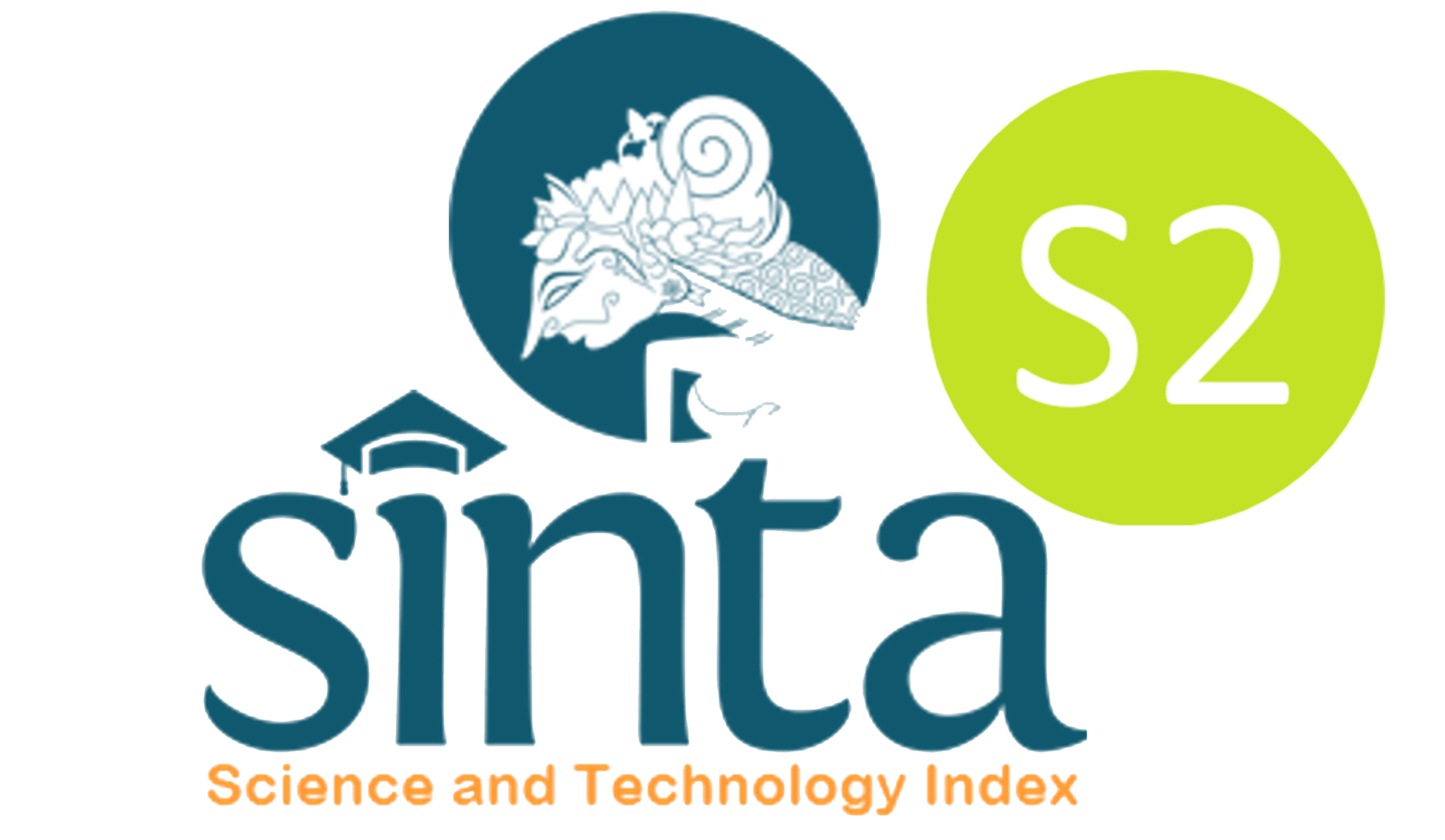Evaluating The Application of Library Information System Technology using The PIECES Method in Remote Areas
Anton Yudhana(1*); Herman Herman(2); Suwanti Suwanti(3); Muhammad Kunta Biddinika(4);
(1) Universitas Ahmad Dahlan
(2) Universitas Ahmad Dahlan
(3) Universitas Ahmad Dahlan
(4) Universitas Ahmad Dahlan
(*) Corresponding Author
AbstractOver five years, the implementation of the library information system at IKIP Muhammadiyah Maumere faced a challenge, frequent errors during data input that hindered users from fully utilizing the system. These issues not only affected users’ interest but also highlighted the significance of the human factor in shaping the quality of an information system. To make full use of the system, it was crucial to identify and address the problems associated with it. This research delved into the experiences of 242 library information system users, including lecturers, students, and librarians, by using the PIECES method. The goal was to analyze users’ satisfaction and uncover any underlying issues within the system. The results of the PIECES analysis revealed average satisfaction scores, showcasing users' contentment with the system's performance (3.77), information (3.79), economy (3.80), control (3.77), efficiency (3.77), and service (3.89). These findings suggest that the library information system has been meeting users' expectations. However, a significant problem emerged in the performance variable, particularly in the system stability. Additionally, issues related to data compatibility, duplication in storage, and users’ authority management, access control, and system errors were observed in the information and control variables. Based on these identified challenges, recommendations for system improvement were made by targeting low satisfaction levels. Proposed solutions involve enhancing data management, storage practices, user access control, and reducing the risk of system errors, ensuring more efficient and reliable library information system
KeywordsPIECES; Problem Identification; System Development Recommendations; User Satisfaction
|
Full Text:PDF |
Article MetricsAbstract view: 259 timesPDF view: 160 times |
Digital Object Identifier https://doi.org/10.33096/ilkom.v15i2.1539.250-261 https://doi.org/10.33096/ilkom.v15i2.1539.250-261
|
Cite |
References
A. Afthanorhan, H. Foziah, and N. A. Majid, “Investigating Digital Library Success using the DeLone and McLean Information System Success 2 . 0 : The Analysis of Common Factor based Structural Equation Modeling,” in Journal of Physics: Conference Series, 2019, pp. 0–8. doi: 10.1088/1742-6596/1529/4/042052.
I. W. B. W. P. Niarta, I. Made Candiasa, and Sariyasa, “Evaluasi Sistem Informasi Dosen pada ITB Stikom Bali Menggunakan Metode PIECES (Performance Information Economics Control Efficiency and Service),” J. Nas. Pendidik. Tek. Inform., vol. 10, no. 3, p. 123, 2021, doi: 10.23887/janapati.v10i3.34973.
T. Hartati, N. Hikmah, and Leliyanah, “Analysis and Evaluation of Employee Performance Assessment System Using The PIECES Method at PT. Citra Pesona Gemilang,” J. Inf. Syst. Informatics Comput., vol. 6, no. 1, pp. 117–124, 2022, doi: 10.52362/jisicom.v6i1.798.
M. Pangri, S. Sunardi, and R. Umar, “Metode Pieces Framework Pada Tingkat Kepuasan Pengguna Sistem Informasi Perpustakaan Universitas Muhammadiyah Sorong,” Bina Insa. ICT J., vol. 8, no. 1, pp. 63–72, 2021.
D. Ramadhanti, D. P. Yanda, and E. Yenti, “Peran Perpustakaan Sebagai Pendukung Pembelajaran Jarak Jauh di Masa Pandemi Covid19,” Libraria, vol. 8, no. 1, pp. 1–30, 2020.
Y. D. C. Saragih, R. Siringoringo, and R. Nainggolan, “Sistem Informasi Perpustakaan Pada SMP Negeri 1 Purba,” J. Tugas Akhir Manaj. Inform. Komputerisasi Akunt., vol. 1, no. 1, pp. 27–33, 2021, [Online]. Available: https://repository.unikom.ac.id/id/eprint/113
S. Wahyuni, “Evaluasi Kinerja Sistem Informasi Perpustakaan (SIPRUS) menggunakan Analisis PIECES Ditinjau dari Persepsi Pustakawan (Studi Kasus Perpustakaan UIN Sunan Kalijaga Yogyakarta),” J. Ilmu Perpust. dan Inf., vol. 4, no. 1, pp. 68–82, 2020.
I. G. N. A. Suaryana, I. G. A. E. Damayanthi, and N. K. L. A. Merkusiwati, “Kualitas dan Kepuasan Pengguna Terhadap Sistem Informasi Akademik Berbasis Web,” J. Ilm. Akunt. dan Bisnis, vol. 11, no. 2, pp. 84–90, 2016, doi: 10.24843/jiab.2016.v11.i02.p03.
A. Yudhana, A. Fadlil, and M. Rosidin, “Indonesian words error detection system using nazief adriani stemmer algorithm,” Int. J. Adv. Comput. Sci. Appl., vol. 10, no. 12, pp. 219–225, 2019, doi: 10.14569/ijacsa.2019.0101231.
Habiburrahman, “Model-Moel Evaluasi Model-Model Evaluasi dalam Sistem Informasi Perpustakaan,” J. Ilmu Perpust. Inf. (JIPI ), vol. 1, no. 1, pp. 92–101, 2016, [Online]. Available: http://jurnal.uinsu.ac.id/index.php/jipi/article/view/111
A. Frisdayanti, “Peranan brainware dalam sistem informasi manajemen,” J. Ekon. dan Manaj. Sist. Inf., vol. 1, no. 1, pp. 60–69, 2019, doi: 10.31933/JEMSI.
S. A. Akbar, K. H. Ghazali, H. Hasan, Z. Mohamed, W. S. Aji, and A. Yudhana, “Rapid Bacterial Colony Classification Using Deep Learning,” Indones. J. Electeical Eng. Comput. Sci., vol. 26, no. 1, pp. 352–361, 2022, doi: 10.11591/ijeecs.v26.i1.pp352-361.
N. K. A. Putri and A. D. Indriyanti, “Penerapan PIECES Framework sebagai Evaluasi Tingkat Kepuasan Mahasiswa terhadap Penggunaan Sistem Informasi Akademik Terpadu (SIAKADU) pada Universitas Negeri Surabaya,” J. Emerg. Inf. Syst. Bus. Intell., vol. 02, no. 02, pp. 78–84, 2021, [Online]. Available: https://siakadu.unesa.ac.id
Dwiyantoro, “Analisis dan Evaluasi Penerapan Sistem Informasi Smart Library Amikom Resource Centre Dengan Metode Pieces Framework,” Tik Ilmeu J. Ilmu Perpust. dan Inf., vol. 3, no. 2, pp. 109–124, 2019.
H. N. Putra, “Analisis Pelaksanaan Sistem E-Puskesmas dengan Menggunakan Metode PIECES di Puskesmas Pemancungan Padang Tahun 2018,” Ensiklopedia J., vol. 1, no. 1, pp. 63–69, 2018.
D. Nurulita and S. Darnoto, “Analisis Sistem Informasi Inovasi PSC (Public Safety Center) 119 dengan Metode PIECES di Dinas Kesehatan Kabupaten Boyolali,” in Prosiding-SEMNAS & Call for Papers, 2017, pp. 6–11.
U. Nugraha, “Design of information systems for population data collection based on client-server at Bagolo village,” 2017, vol. 1855, no. 060003, pp. 1–7. doi: 10.1063/1.4985526.
S. Ramadhani and W. A. Kusuma, “PIECES Framework untuk Analisa Tingkat Kepuasan Pengguna dan Kepentingan Sistem Informasi,” J. Teknol. dan Manaj. Inform., vol. 4, no. 2, pp. 209–214, 2018, doi: 10.26905/jtmi.v4i2.2101.
Choriah and E. Nurmiati, “Analisis Kepuasan Pengguna Whatsapp Sebagai Media Knowledge Sharing Menggunakan Metode Pieces,” J. Teknol., vol. 14, no. 1, pp. 61–68, 2022.
W. Priyadi and O. Marleen, “Analisis Website Menggunakan Metode PIECES di PT Majapahit Teknologi Nusantara,” J. Ilm. Komputasi, vol. 19, no. 4, pp. 575–587, 2020.
M. Ula, R. Tjut Adek, and B. Bustami, “Emarketplace Performance Analysis Using PIECES Method,” Int. J. Eng. Sci. Inf. Technol., vol. 1, no. 4, pp. 1–6, 2021, doi: 10.52088/ijesty.v1i4.138.
N. Huda, “Analisis Kinerja Website PT PLN (PERSERO) menggunakan Metode PIECES,” J. Sist., vol. 8, no. 1, pp. 78–89, 2019.
S. Y. B. Ambarita, “Implementation of The PIECES Method in The Student Assessment System of SMPN 201 Jakarta,” Eduvest-Journal Univers. Stud., vol. 1, no. 9, pp. 988–998, 2021.
I. Indrawati, P. L. L. Belluano, H. Harlinda, F. A. R. Tuasamu, and D. Lantara, “Analisis Tingkat Kepuasan Pengguna Sistem Informasi Perpustakaan menggunakan PIECES Framework,” ILKOM, vol. 11, no. 28, pp. 118–128, 2019.
D. Abdurahman and T. P. Prasetyo, “Mengukur Tingkat Kepuasan Mahasiswa dalam Pembelajaran dengan Menggunakan Sistem Pakar (Studi Kasus: Mahasiswa Teknik Informatika),” J. J-Ensitec, vol. 02, no. 02, pp. 20–24, 2016.
A. R. A. Nalendra et al., Statistika Seri Dasar dengan SPSS. 2021.
M. S. Safarudin, “Analisis Kepuasan Pengguna Marketplace Tokopedia Dengan Metode PIECES di Tokopedia Community Batam,” in Seminar Nasional Ilmu Sosial dan Teknologi, 2018, no. 1, pp. 109–114.
A. F. Hanesya, A. C. N. Marchianti, and S. Bukhori, “Evaluation of the Hospital Information System ( HIS ) using EUCS and PIECES Methods on the Medical Record Section of RSUD dr. Haryoto Lumajang,” Int. J. Comput. Netw. Secur. Inf. Syst., vol. 3, no. 1, pp. 13–20, 2021.
A. Anwarudin, A. Fadlil, and A. Yudhana, “Analisis Kualitas Layanan Sistem Infomasi Akademik SIMAK dengan Pendekatan e-Servqual Gap,” Elektron. Kendali Telekomun. Tenaga List. Komput., vol. 5, no. 1, pp. 85–96, 2022, [Online]. Available: https://jurnal.umj.ac.id/index.php/resistor/article/view/12638
Tugiman, Herman, and A. Yudhana, “Uji Validitas Dan Reliabilitas Kuesioner Model Utaut Untuk Evaluasi Sistem Pendaftaran Online Rumah Sakit,” J. Tek. Inform. dan Sist. Inf., vol. 9, no. 2, pp. 1621–1630, 2022, [Online]. Available: https://doi.org/10.35957/jatisi.v9i2.2227
A. B. Fawait, A. Yudhana, and R. Umar, “Pengambilan Keputusan Penentuan Sentra Industri Kecil dan Menengah Unggulan Menggunakan Metode Analytical Hierarchy Process (AHP),” J. Media Inform. Budidarma, vol. 6, no. 2, pp. 1110–1117, 2022, doi: 10.30865/mib.v6i2.3943.
S. Brata, A. Yudhana, and Herman, “Perbandingan Metode Technique for Order by Similarity to Ideal Solution (TOPSIS) dan a New Additive Ratio Assessmen (ARAS) dalam Penerapan Customer Relationship Management (CRM) pada KL LAZISMU,” TECHNO, vol. 22, no. 2, pp. 131–138, 2021.
A. Yudhana, R. Umar, and S. Saputra, “Fish Freshness Identification Using Machine Learning: Performance Comparison of k-NN and Naïve Bayes Classifier,” J. Comput. Sci. Eng., vol. 16, no. 3, pp. 153–164, 2022, doi: 10.5626/JCSE.2022.16.3.153.
Y. Asbar and M. A. Saptari, “Analisa Dalam Mengukur Kualitas Pelayanan Terhadap Kepuasan Konsumen Menggunakan Metode PIECES,” J. Visioner Strateg., vol. 6, no. 2, pp. 39–47, 2017.
Refbacks
- There are currently no refbacks.
Copyright (c) 2023 Anton Yudhana, Herman, Suwanti, Muhammad Kunta Biddinika

This work is licensed under a Creative Commons Attribution-ShareAlike 4.0 International License.










